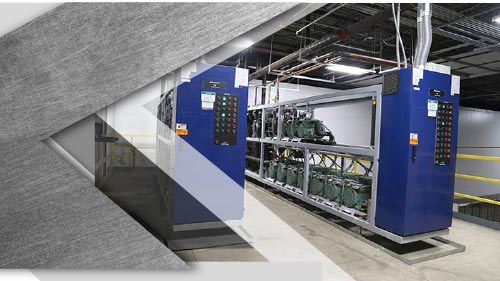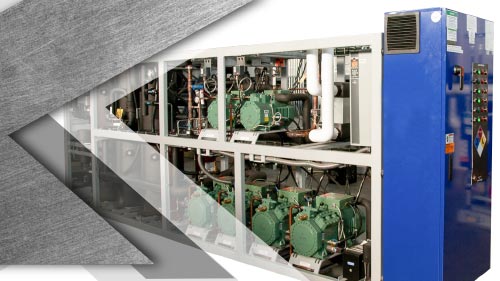EXECUTIVE SUMMARIES
EXECUTIVE SUMMARIES

The Regulation of Industrial Refrigeration Equipment is Increasing.
The US Environmental Protection Agency (EPA) states there are approximately 150 catastrophic accidents each year at facilities that make, use, or store extremely hazardous substances (EHS). With ammonia refrigeration making up approximately 40% of the facilities with EHS regulated under the EPA’s Risk Management Program, these facilities appear to be coming under more scrutiny.

A CO2 solution to ensure sustainability and corporate citizenship.
Best Foods to expand their capabilities to meet ever-growing customer demand. To further their business’s growth, they needed, an additional 25,000 sq. ft freezer, a 20,000 sq. ft cooler, a 15,000 sq. ft refrigerated dock, and a sizeable dry storage area.

HelloFresh growth mandated an expansion of their cold storage warehouse and processing capacity.
Refrigeration was needed to service approximately 300,000 sq. ft. of total space, including 150,000sq. ft. of production, a 33,000 sq. ft. freezer, shipping bay, prep rooms and two coolers.

House of Spice recently decided to build a Chicago-area facility to help keep pace with their rapidly expanding business.
A growing awareness of the environmental consequences of using global warming synthetic refrigerants inspired House of Spice to seek alternative refrigeration solution such as CO2.

Redwood Farms Meat Processors was leasing cold storage and did not have the control they needed to regulate the temperature of their products with their current storage capabilities.
Affordability driven by the system’s energy efficiency, the inherent safety of using CO2 versus ammonia, and the “natural” refrigerant characteristics (GWP=1; ODP=0) of CO2 enabled Redwood Farms to meet their goals.

Vermont Food Bank, helps those in need by acquiring and distributing over 12 million pounds of food annually.
The warehouse-type facility they had operated out of was no longer adequate for the larger quantities of fresh perishable foods that they were now handling. VF needed to change how they operate and to do so they needed new capability.

Angelic Bakehouse needed to increase capacity and capability.
To get to the next level for their business, they determined they needed to install a blast freezer and accompanying refrigerated processing areas. Angelic Bakehouse was to have five blast freezers, a refrigerated packaging area, a refrigerated dock area, and a main storage freezer.

The Regulation of Industrial Refrigeration Equipment is Increasing.
The US Environmental Protection Agency (EPA) states there are approximately 150 catastrophic accidents each year at facilities that make, use, or store extremely hazardous substances (EHS). With ammonia refrigeration making up approximately 40% of the facilities with EHS regulated under the EPA’s Risk Management Program, these facilities appear to be coming under more scrutiny.

A CO2 solution to ensure sustainability and corporate citizenship.
Best Foods to expand their capabilities to meet ever-growing customer demand. To further their business’s growth, they needed, an additional 25,000 sq. ft freezer, a 20,000 sq. ft cooler, a 15,000 sq. ft refrigerated dock, and a sizeable dry storage area.

HelloFresh growth mandated an expansion of their cold storage warehouse and processing capacity.
Refrigeration was needed to service approximately 300,000 sq. ft. of total space, including 150,000sq. ft. of production, a 33,000 sq. ft. freezer, shipping bay, prep rooms and two coolers.

House of Spice recently decided to build a Chicago-area facility to help keep pace with their rapidly expanding business.
A growing awareness of the environmental consequences of using global warming synthetic refrigerants inspired House of Spice to seek alternative refrigeration solution such as CO2.

Redwood Farms Meat Processors was leasing cold storage and did not have the control they needed to regulate the temperature of their products with their current storage capabilities.
Affordability driven by the system’s energy efficiency, the inherent safety of using CO2 versus ammonia, and the “natural” refrigerant characteristics (GWP=1; ODP=0) of CO2 enabled Redwood Farms to meet their goals.

Vermont Food Bank, helps those in need by acquiring and distributing over 12 million pounds of food annually.
The warehouse-type facility they had operated out of was no longer adequate for the larger quantities of fresh perishable foods that they were now handling. VF needed to change how they operate and to do so they needed new capability.

Angelic Bakehouse needed to increase capacity and capability.
To get to the next level for their business, they determined they needed to install a blast freezer and accompanying refrigerated processing areas. Angelic Bakehouse was to have five blast freezers, a refrigerated packaging area, a refrigerated dock area, and a main storage freezer.
